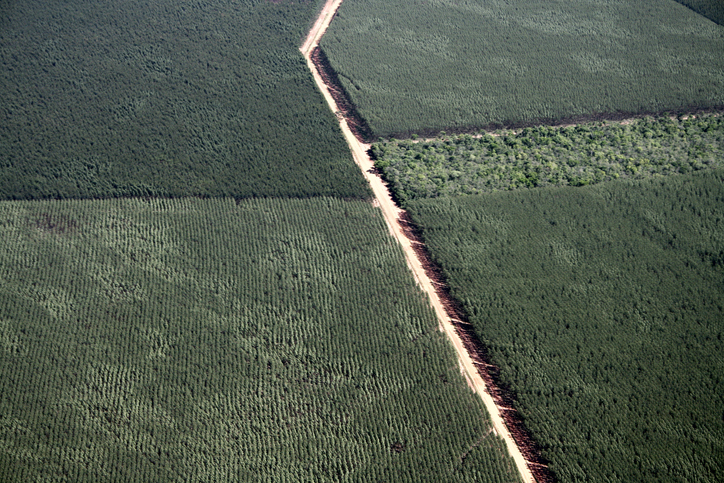
In the Seychelles archipelago in east Africa, flooding and erosion caused by rising sea levels pose an imminent threat to the country’s many low-lying islands. At the same time its mangrove forests, which serve as a vital buffer against these impacts, are disappearing: Approximately 70% of Seychelles mangroves have been destroyed since the late 1700s due to human-driven development and agriculture as well as soil erosion from sea-level rise.
Today the Seychelles Government is working with local community leaders to restore the mangroves, and not just for protection against rising seas. Research shows that these forests can store about 2.5 million tonnes of CO2-equivalent (equal to taking 500,000 cars off the road for a year), directly helping to fight climate change. They also provide a breeding ground for fisheries, a sector that contributes one-fifth of the country’s GDP, benefiting local communities’ livelihoods and helping to protect the islands’ vibrant biodiversity.
This is just one example of a “nature-based solution,” a project which harnesses the power of ecosystems to benefit people, nature and climate.

Why Are Nature-based Solutions on the Rise?
While the concept of using nature to benefit both lives and lands is by no means new, global interest in nature-based solutions has skyrocketed in recent years. Many now see nature-based solutions as a key approach for addressing not only climate change but a range of social, environmental and economic challenges simultaneously — from biodiversity loss, food security and air pollution to disease control and declining local economies.
Yet there remains widespread debate about what exactly constitutes a nature-based solution as well as how to best incorporate these strategies into broader climate and conservation efforts. This uncertainty has contributed to significant underinvestment: It’s estimated that to limit temperature rise to below 1.5 degrees C (2.7 degrees F), halt biodiversity loss and curb land degradation, annual investments in nature-based approaches must triple by 2030.
As nature-based solutions continue to rise on the global agenda, building a more coherent understanding around the concept and its implications will be key to raising support for effective, scalable solutions that benefit both people and the planet. Here’s what to know.
What Exactly Are Nature-based Solutions?
Broadly, nature-based solutions are actions to protect, conserve, restore, and sustainably use and manage ecosystems in a way that addresses social, economic and environmental challenges while simultaneously benefiting human well-being and biodiversity. In other words, they are interventions that use nature and the natural functions of healthy ecosystems to tackle some of the most pressing challenges of our time. By contrast, actions that simply minimize humans’ impact on nature, such as reducing waste or decreasing water use, are not considered nature-based solutions.
A central feature of nature-based solutions is that they can deliver a range of positive outcomes or “co-benefits” alongside their intended outcomes. For example, in Mumbai, India, the state government’s initiative to create a 3.2-acre urban forest can not only help address urban heat island effects — with the potential to cool temperatures in the area by up to 3 degrees C (5.4 degrees F) — but will also provide recreational spaces for local communities. In Burundi, terraces of trees and fodder crops intended to control soil erosion over steep hillsides also build resilience to landslides, sequester carbon and help increase agricultural productivity. And a restored wetland in Chennai, India aims to increase the resilience of nearby communities to floods while improving water supply and quality and providing habitat for wildlife.

In addition to these environmental and resilience benefits, increasing evidence shows that nature-based solutions can reduce climate-related risks to people and property as effectively as traditional human-built or “gray” infrastructures (such as sea walls or water discharge tunnels).
Given their potential, nature-based solutions are quickly gaining traction in public and private spheres worldwide. Their importance is recognized by major international scientific bodies working on climate change and biodiversity, such as the Intergovernmental Panel on Climate Change and the Intergovernmental Science-Policy Platform on Biodiversity and Ecosystem Services. Countries are incorporating the concept into their national climate targets — over 92% of which reference nature-based solutions — as well as their biodiversity and restoration targets. And a growing number of international organizations, NGOs and private sector institutions are implementing new nature-based programs.
However, it can be hard to determine which specific solutions fall under this umbrella. There are more than 20 different definitions of nature-based solutions, each with varying scopes and emphases. For example, some limit nature-based solutions to those based in functioning ecosystems, meaning “nature-derived” solutions (such as wind and solar energy) and “nature-inspired” solutions (which mimic natural processes using human-made techniques), would not count. Other definitions encompass solutions that mimic or work in concert with nature as long as they provide co-benefits.
Despite their differences, these definitions share the core idea that by working with nature, rather than against it, we can develop and implement solutions towards a resilient, resource-efficient and green economy.
How Can Nature-based Solutions Help Fight Climate Change?
Nature-based solutions are now considered one of the “super solutions” to climate change — meaning the cheapest, fastest and most widely available. Research shows that that they could provide one-third of the carbon mitigation needed to meet the goals of the Paris Agreement. But not all of these solutions are about climate change; projects like coral reef protection and restoration or groundwater conservation and recharging can provide valuable benefits for people and ecosystems without having a specific goal to mitigate greenhouse gas (GHG) emissions.
A subset of nature-based solutions, called “natural climate solutions,” are expressly aimed at addressing climate change, either by avoiding or reducing emissions or by removing and storing carbon from the atmosphere. One example would be a forest restoration project that improves the soil quality and tree cover to increase GHG sequestration. Natural climate solutions can also provide adaptation benefits given their focus on conservation, restoration and improved land management; however, their primary focus historically has been on mitigation.

The growing global interest in nature-based solutions could have important impacts on climate action. These solutions provide a holistic approach that can consider the full range of potential benefits and outcomes from climate action, rather than just emissions-reduction potential. This helps practitioners design and implement interventions in nature that also support biodiversity, sustainable development and other critical goals.
Because nature-based solutions aim to address social and economic challenges, they can also act as a tool for mainstreaming environmental action into policy and practice. For example, they provide the private sector (businesses and investors) with a practical way to rethink how their assets and investment portfolios incorporate the value of, and work in partnership with, nature. Some companies already recognize the inherent value of nature-based approaches to enhance resilience within their supply chains and strengthen their brand reputation. Companies across many sectors have set strategies for nature conservation and restoration. And nature-based solutions are increasingly seen as a critical way to mitigate GHG emissions and achieve net-zero goals while also contributing to the UN’s global “30×30” nature goal.
Finally, nature-based solutions could help bring financial flows more in line with social and environmental challenges. In particular, rising corporate interest in nature-based actions could channel much-needed private sector capital to help fill the substantial climate and nature finance gaps.
What Are the Potential Drawbacks of Nature-based Solutions?
While nature-based solutions are generally seen as a promising field, there are some important criticisms to consider.
In the private sector, NGOs, researchers and activists have raised concerns of “greenwashing.” This means that companies might overstate the impact of their nature-based activities without ensuring and verifying the true impacts of these actions. For example, some companies rely on large-scale industrial tree-planting initiatives to meet their climate targets without fully considering how these programs affect native ecosystems, their impacts on the rights and livelihoods of Indigenous peoples and local communities, or whether the carbon is stored permanently.

There are also concerns that a heightened focus on nature-based solutions to address climate change could shift investment away from other important areas. For example, over-reliance on nature-based programs as an inexpensive offsetting option in corporate mitigation targets could potentially distract from necessary progress towards industrial decarbonization.
Others worry that this field is becoming overly climate focused, and that this could overlook the urgent need to protect and connect a wide range of intact ecosystems across land and sea. These ecosystems provide important services in their own right, such as regulating local and regional weather regimes, generating rain and reducing risk of drought, supporting pollination and lowering infectious disease risks, to name just a few.
How Can We Responsibly Harness the Power of Nature-based Solutions?
Amidst growing interest and private sector involvement, decision-makers should proceed with cautious optimism in understanding how nature-based solutions are being designed and used.
A wide range of stakeholders — from governments and NGOs to private companies and local communities — have called for further guidance and harmonization around how nature-based solutions are defined and implemented, as well as transparent and standardized metrics for labeling, monitoring, reporting and verifying progress on projects. This should include new and additional incentives that encourage public and private sector actors to not only support nature-based solutions, but to maximize and track their contributions over time. Additional measures are needed to ensure that poorly designed nature-based projects and programs are identified and remedied and do not drive out good investments.
It is also critical that project and program developers, donors and investors consider the full range of environmental, socio-cultural and economic impacts that can come with nature-based solutions. Indigenous peoples and local communities are often the ones implementing solutions on the ground and experiencing their impacts. Often, these groups also possess deep knowledge about the ecosystems in which they reside. Therefore, nature-based solutions should be designed with early participation from Indigenous peoples and local communities while ensuring that the benefits are equitably shared.
Properly designed and executed, nature-based solutions have the potential to deliver benefits for people, nature and climate in a manner unparalleled by other approaches. Achieving many (if not most) global goals, public policies and corporate commitments will depend on our ability to appropriately align incentives with this age-old yet radical tool.
This article originally appeared on WRI’s Insights.
Esther Sekyoung Choi is Associate II, Nature-based Solutions & Climate Private Sector for WRI.
Radhika Rao is Research Associate, Nature-based Solutions & Climate Private Sector for WRI.
Roman Czebiniak is Director, Nature-based Solutions & Climate Private Sector for WRI.








